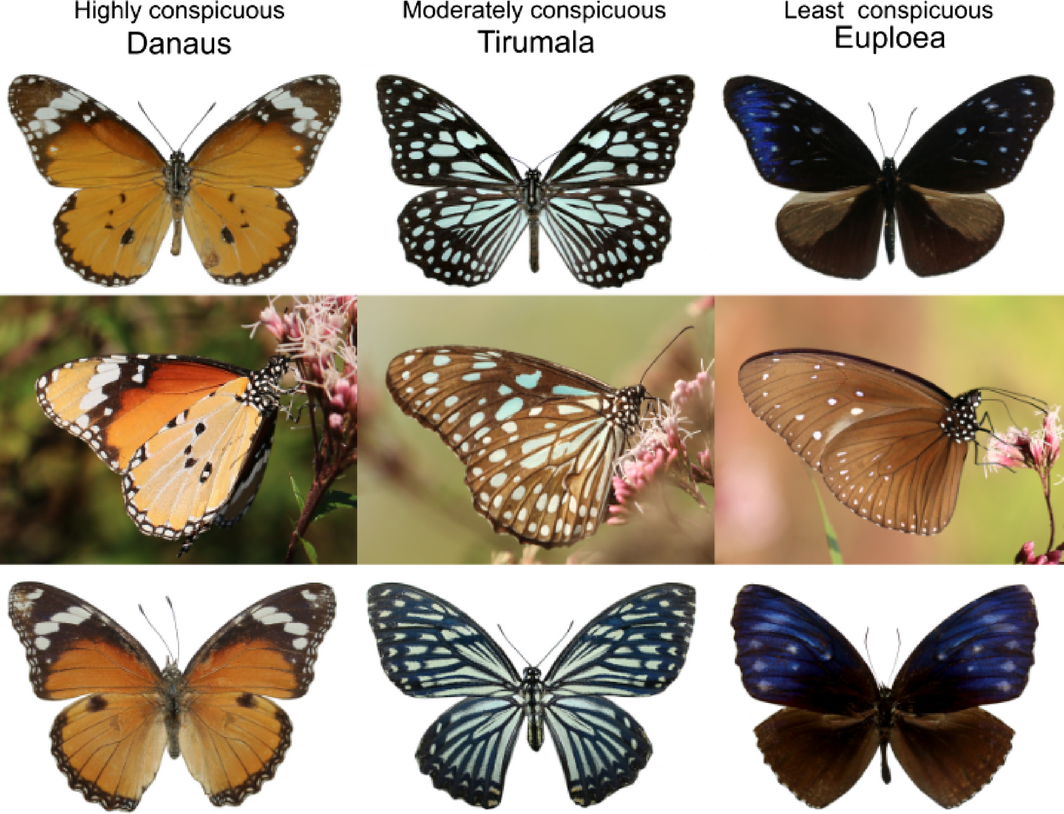It is widely believed that aposematic (warning) signals should be conspicuous, but in nature, they vary from highly conspicuous to near cryptic. The relationship between toxicity and conspicuousness has received much attention, yet is still not well understood.
Researchers from Xishuangbanna Tropical Botanical Garden (XTBG) conducted a study to investigate the similarly toxic Danainae (Nymphalidae) butterflies and their mimics.
The researchers selected three well-known butterfly mimicry rings (Danaus, Tirumala, and Euploea; Nymphalidae, Danainae) mainly distributed across Asia from India, Sri Lanka to China and Japan. They proposed the hypothesis that spatial variation in predation pressure drives conspicuousness-dependent spatial variation in aposematic and mimetic signal fitness
They investigated avian attack rates and abundance of selected species across 11 sites in Sri Lanka and SW China. They compared the relative attack rate across the sites with respect to the background predation pressure, which was calculated as the attack rate on medium to large size (with the wingspan of >50 mm) nonaposematic, nontoxic butterfly species。
They found that the three focal mimicry rings (Danaus, Tirumala, and Euploea) varied substantially in conspicuousness. The benefits of conspicuousness varied along a gradient of predation pressure.
The three similarly toxic aposematic butterfly groups experienced substantially different patterns of variation in avian attack rates in response to changes in background predation pressure.
Highly conspicuous butterflies experienced lower avian attack rates when background predation pressure was low, but attack rates increased rapidly as background predation pressure increased. Conversely, the least conspicuous butterflies experienced higher attack rates at low predation pressures, but at high predation pressures, they appeared to benefit from crypsis.
The study thus provides the first empirical evidence for a possible mechanism that can explain the maintenance of aposematic signal diversity independent of variation in toxicity.
The study entitled “Does spatial variation in predation pressure modulate selection for aposematism?” has been published in Ecology and Evolution.
Contact
CHEN Jin Ph.D Principal Investigator
Key Laboratory of Tropical Forest Ecology, Xishuangbanna Tropical Botanical Garden, Chinese Academy of Sciences, Mengla, Yunnan 666303, China
Tel: 86-691-8715457
E-mail: cj@xtbg.org.cn

Example species from each of the three mimicry rings studied;
(left to right) Danaus genutia, Tirumala limniace, Euploea mulciber.
(Images by Tharanga Aluthwattha)

